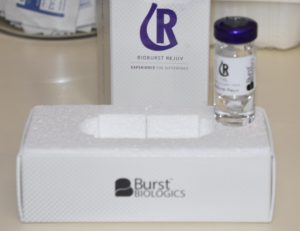Helping surgical incisions heal faster and with less scar would be of interest to any patient but this is of particular relevance in the aesthetic surgery patient. One of the adverse tradeoffs of numerous cosmetic procedures is that of an incision and resultant scar to achieve the procedure’s potential benefits. While numerous postoperative scar strategies exist to improve the final appearance of the scar, having less scar develop initially would be even better.

When applied at the site of a soft tissue injury, it uses the body’s own natural healing process to signal molecules to initiate a regenerative response. Essentially signaling molecules recruit the body’s own stem cells to the site of injury and cause them to proliferate. These stem cells promote a regenerative process for the formation of matrix proteins and blood vessels.
Stem cells have been and will continue to be a hot topic for wound healing in all types of tissues. Where to get the stem cells to do so is matter of debate for which no definitive answer currently exists. Although much attention has been given to adipose derived stem cells (ADSC) and bone marrow concentrate (BMC), the umbilical cord has also been shown to have stem cells that can activate into new tissue.BioBurst Rejuv has considerable research showing that not only does their processing provide stem cells for injection, but they also have shown high degrees of activation and proliferation. They have also shown that in the BioBurst processing technique they have isolated growth factors and cytokines that stimulate stem cell activation.

Dr. Barry Eppley
Indianapolis, Indiana


